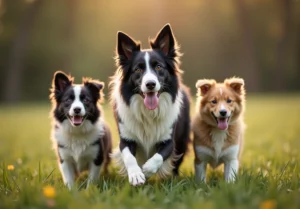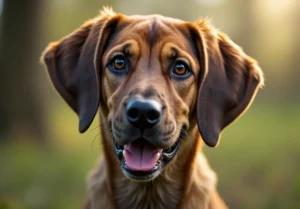Cats are fascinating creatures, known for their agility, grace, and of course, their retractable claws. Have you ever wondered why cats have retractable claws? Let’s dive into the reasons behind this unique feline trait.
Evolutionary Advantage
Cats have evolved to have retractable claws, giving them a unique edge in both hunting and self-defense. The ability to retract their claws allows cats to keep them sharp and protected when not in use, conserving energy and ensuring their claws are always ready for action. This evolutionary adaptation enables cats to move silently and discreetly, essential for sneaking up on prey without alerting them. Additionally, retractable claws help prevent the wear and tear of their claws, ensuring they remain sharp and efficient for hunting.
Physical Adaptations
The anatomy of a cat’s paw is a remarkable feat of nature. The ability to retract claws is made possible by specialized tendons and muscles working together seamlessly. These tendons are connected to the bones in the paw, allowing cats to control the extension and retraction of their claws with precision. When a cat extends its claws, the tendons pull them out, ready for action. However, when the claws are not needed, the tendons relax, retracting the claws back into their sheaths effortlessly.
Unique Insight: In addition to aiding in hunting and self-defense, retractable claws also play a crucial role in a cat’s social interactions. By retracting their claws during play or grooming sessions, cats can control the force of their movements, preventing accidental harm to their fellow feline companions or human caregivers.
- Cats are masters of adaptability, and their retractable claws showcase this perfectly.
- The ability to retract claws is a testament to the intricate and specialized design of a cat’s paw, allowing for unparalleled agility and precision in a variety of situations.
- Remember, a cat’s retractable claws are not just for hunting but also for maintaining social harmony with their furry friends.
Climbing and Marking
Cats’ retractable claws are like their own set of hidden superpowers. When they need to scamper up a tree or a fence, these claws spring into action, providing a secure grip on any surface. Imagine trying to scale a tree with your nails constantly out – it just wouldn’t work as well, would it? Our feline friends use their retractable claws not only for climbing but also for leaving their mark on objects around them. Those scratch marks on your favorite couch aren’t just a naughty habit – they’re a cat’s way of claiming their territory and communicating with other cats in the area. So, next time you see those scratch marks, remember it’s all part of your cat’s natural behavior!
Grooming Behavior
Did you know that cats are pretty much obsessed with keeping their nails in top-notch condition? It’s like having your own personal manicurist on call 24/7. Cats use their retractable claws to groom themselves meticulously, ensuring they stay sharp and clean. By retracting their claws, cats prevent them from getting worn down and keep them ready for action whenever needed. So, the next time you catch Mittens spending what seems like hours licking and nibbling at their paws, know that they’re not just pampering themselves – they’re engaging in a crucial grooming routine to maintain their claws in purrfect shape!
Additional Unique Insight or Angle
When cats scratch an object, they also leave behind scent markers from glands in their paws. So, those scratch marks aren’t just for show – they’re a way for cats to communicate with each other through their unique scent signature. It’s like leaving a little “calling card” for other felines in the neighborhood!
Instinctual Behavior
Cats have retractable claws due to their instinctual behavior as natural-born hunters. By being able to retract their claws, cats can silently approach their prey without creating noise that may alert their target. This allows them to stealthily stalk and pounce on their victims, a technique that has been honed over thousands of years of evolution. Even in domestic settings, this instinct remains strong as cats still display hunting behaviors like stalking and pouncing on toys or unsuspecting household items. So, the retractable claws are not just a physical attribute but a key component of a cat’s hunting prowess.
Differences Among Cat Species
Different species of cats have varying degrees of retractability in their claws, which contributes to their unique hunting and survival strategies. For example, the cheetah possesses semi-retractable claws that provide them with extra traction when sprinting at high speeds, aiding in their swift hunting techniques. On the other hand, the snow leopard’s fully retractable claws help them navigate their mountainous terrain with ease, ensuring they can stealthily chase down prey without slipping. Each species has evolved to adapt their retractable claws to suit their specific environment and hunting methods, showcasing the diversity and ingenuity of the feline family.
Lion: Lions have retractable claws that they use to grab and hold onto prey during hunts. Their claws help them maintain a firm grip, especially when taking down larger animals like buffalos or zebras.
Jaguar: Jaguars have the strongest bite force of all big cats and use their retractable claws to climb trees in search of prey. They often ambush their victims from above, using their sharp claws to grip and secure their catch.
Leopard: Leopards use their retractable claws for climbing trees and dragging their kill up into the safety of branches. This unique hunting strategy allows them to minimize competition from other predators like hyenas or lions.
In essence, the retractable claws of different cat species have evolved to meet specific environmental and survival challenges, showcasing the remarkable adaptability and versatility of these incredible predators.
Fun Facts About Cat Claws
Did you know that a cat’s claws are the fastest retractable claws in the animal kingdom? When a cat extends its claws, it takes only around 1/3 of a second for them to fully come out, ready for action. This lightning-fast movement allows cats to defend themselves or grab onto prey in the blink of an eye, showcasing their impressive agility and hunting prowess.
The Bond Between Cats and Their Claws
Cats’ claws are not just sharp tools for scratching and climbing; they are integral to a cat’s identity and overall well-being. Claws are essential for maintaining balance, stretching muscles, marking territory, and even expressing emotions. Without their claws, cats would struggle to perform natural behaviors and may experience stress or frustration.
- Claws help cats stretch their muscles and keep their joints healthy.
- Cats use their claws to mark their territory through scratching.
- Claws enable cats to defend themselves from potential threats or predators.
- When a cat kneads with its claws, it signifies comfort and security.
- Keeping a cat’s claws well-trimmed and providing appropriate scratching surfaces are crucial for their physical and emotional health.
Alex, a passionate animal lover, has experience in training and understanding animal behavior. As a proud pet parent to two dogs and three cats, he founded AnimalReport.net to share insights from animal experts and expand his knowledge of the animal kingdom.




